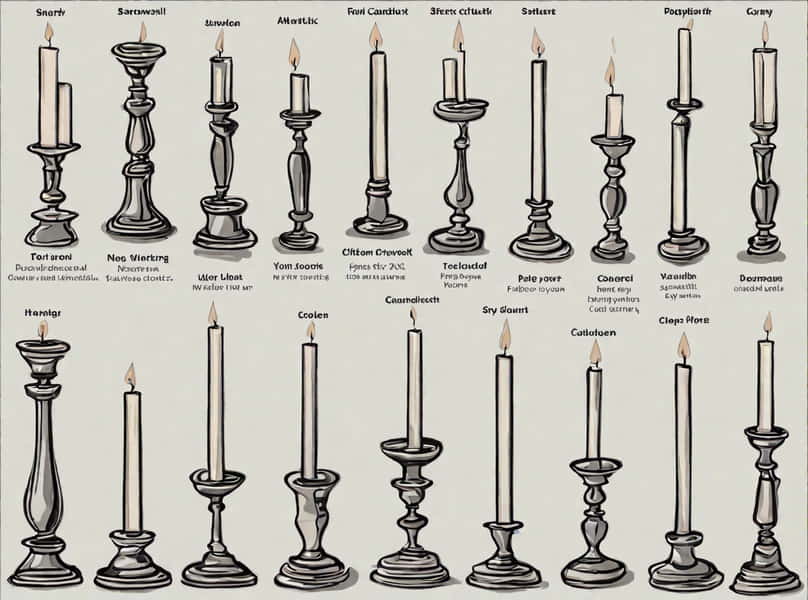Candlestick patterns serve as a vital tool for traders, offering insights into market sentiment and potential price movements. Whether you’re a seasoned investor or a novice, understanding these patterns can significantly enhance your trading skills. In this article, we’ll delve into the intricacies of candlestick patterns, ranging from basic to advanced, and explore their applications in various financial markets.
Basic Candlestick Patterns
Candlestick patterns can be broadly categorized into basic, single, dual, and triple patterns. Basic patterns include well-known shapes like Doji, Hammer, and Marubozu, each carrying specific implications for market trends. These patterns form the foundation for more complex formations.
Single Candlestick Patterns
Single candlestick patterns provide quick insights into market sentiment. The Hammer and Hanging Man patterns signal potential trend reversals, while Doji and Spinning Top patterns indicate market indecision. Marubozu patterns, on the other hand, suggest strong market momentum.
Dual Candlestick Patterns
Engulfing patterns and Tweezer Tops and Bottoms involve two consecutive candles, providing stronger signals. Traders often use these patterns to confirm potential trend reversals or continuations. Understanding the dynamics of each pattern is crucial for accurate interpretation.
Triple Candlestick Patterns
The Morning and Evening Star patterns, along with Three White Soldiers and Three Black Crows, offer in-depth information about changing market conditions. Recognizing these patterns can aid traders in making informed decisions about entering or exiting positions.
Advanced Candlestick Patterns
Dark Cloud Cover and Piercing Line patterns, as well as Inverted Hammer and Shooting Star patterns, add complexity to the trader’s toolkit. However, it’s essential to assess the reliability of these patterns based on market conditions and context.
Using Candlestick Patterns in Trading
Incorporating candlestick patterns into technical analysis requires a nuanced approach. Traders can use these patterns to identify potential entry and exit points, as well as to set stop-loss orders. Risk management strategies should complement pattern analysis for a well-rounded trading approach.
Common Mistakes to Avoid
While candlestick patterns offer valuable insights, it’s crucial to avoid common pitfalls. Overreliance on patterns, ignoring market context, and neglecting risk management can lead to significant losses. Traders should use patterns as one of many tools in their arsenal.
Tips for Learning and Practicing
Learning to identify and interpret candlestick patterns takes time and practice. Utilize trading platforms and simulators to hone your skills, analyze historical price charts, and stay updated on market trends. Continuous learning is key to becoming a proficient pattern analyst.
Real-Life Examples
Examining real-life examples of successful and unsuccessful trades can provide practical insights. Successful trades showcase the effectiveness of pattern analysis, while unsuccessful ones highlight the importance of adapting strategies based on market conditions.
Popular Candlestick Patterns in Forex, Stocks, and Cryptocurrency
Different financial markets exhibit unique patterns. Highlighting patterns relevant to specific markets enables traders to tailor their strategies accordingly. Adapting to the characteristics of forex, stocks, or cryptocurrency markets is essential for success.
Candlestick Patterns and Market Sentiment
Beyond individual trades, candlestick patterns contribute to overall market sentiment. Recognizing patterns across multiple assets can provide a broader perspective on market trends, helping traders align their strategies with prevailing sentiment.
Combining Candlestick Patterns with Other Technical Indicators
To enhance trading strategies, consider integrating candlestick patterns with other technical indicators. Moving averages, RSI, and MACD can complement pattern analysis, offering a comprehensive approach to market analysis.
Candlestick Patterns for Day Trading vs. Long-Term Investing
Traders should tailor their approach to the chosen timeframe. Day traders may focus on shorter-term patterns, while long-term investors might rely on more extended patterns. Understanding the nuances of each timeframe is crucial for successful implementation.
Conclusion
In conclusion, mastering candlestick patterns is a valuable skill for any trader. From basic formations to advanced patterns, each provides unique insights into market dynamics. Continuous learning, practice, and adaptability are key to successfully incorporating candlestick patterns into your trading strategy.
FAQs
-
Q: Can candlestick patterns guarantee successful trades?
- A: No, while patterns offer valuable insights, market conditions can change, and risks are inherent in trading.
-
Q: How often should I review candlestick patterns?
- A: Regularly reviewing patterns ensures you stay informed about evolving market conditions.
-
Q: Are candlestick patterns effective in all financial markets?
- A: While the principles apply broadly, adapting to the characteristics of specific markets is crucial.
-
Q: Can beginners use candlestick patterns effectively?
- A: Yes, with practice and continuous learning, beginners can gain proficiency in pattern analysis.
-
Q: Should I solely rely on candlestick patterns for trading decisions?
- A: No, combining patterns with other technical indicators and risk management strategies is recommended for a comprehensive approach.


